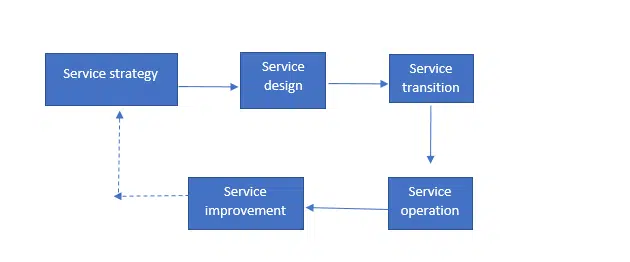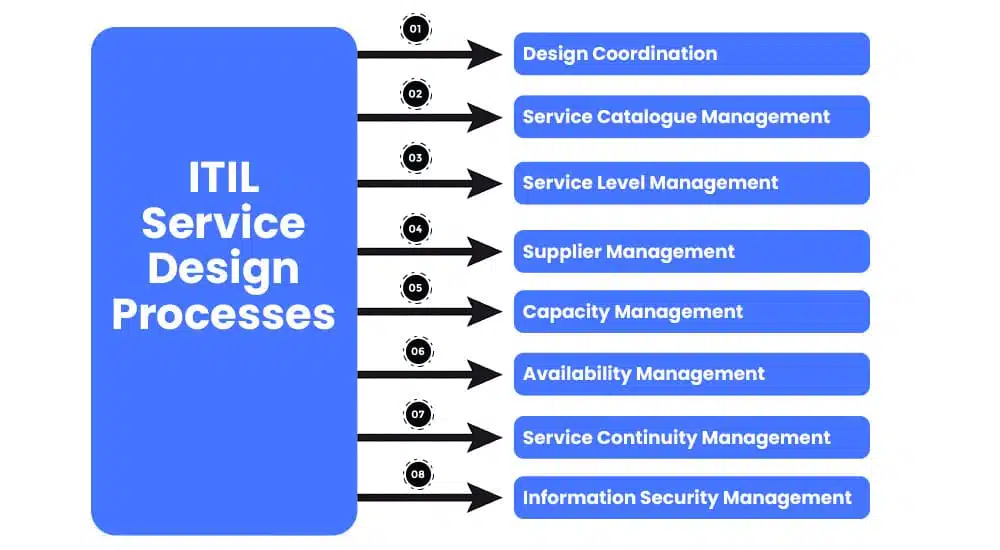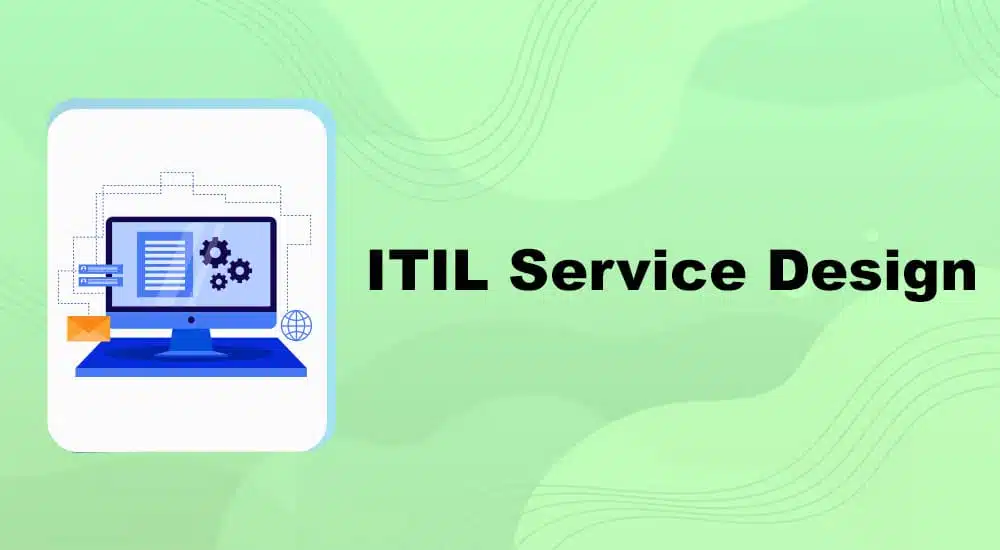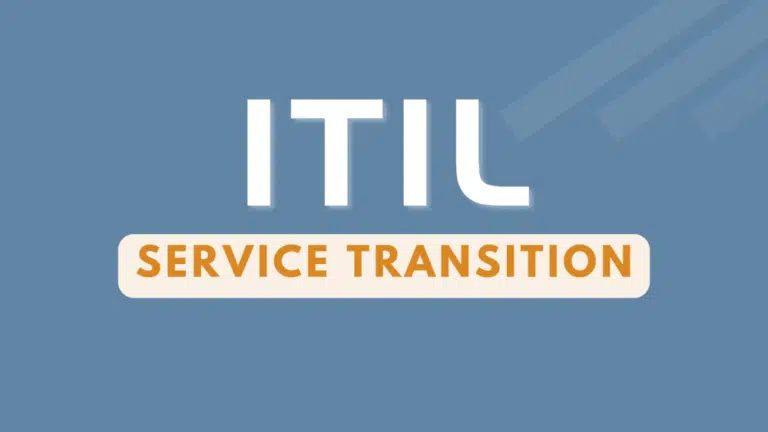Designing IT services that not only meet customer expectations but also align with business needs can be a complex and challenging task. With competing priorities, costs, and risks to manage, it requires collaboration and coordination across various business activities and units.
Read: What is ITIL?
ITIL Service Design is a critical component of the ITIL service lifecycle that aims to transform strategic objectives into a comprehensive portfolio of services that cater to business requirements by considering various factors such as technology, data, processes, and end-to-end business functionality.
ITIL Service Design delivers solutions that align with the organization’s goals and objectives.
The process enhances the speed of decision-making by analyzing the inputs, processes, and outputs of an established design. This approach ensures that the designed services meet business needs and enable the organization to keep up with the dynamic market trends and emerging technologies.
What is ITIL Service Design?
The ITIL V3 service design concept involves a comprehensive approach to defining and documenting all aspects of an IT service and its requirements throughout the service lifecycle. By implementing this approach, all facets of the service are meticulously scrutinized and recorded, ensuring that no aspect is overlooked.
The ITIL Service Design is one of the five ITIL service life cycle stages. The other four stages of the ITIL service life cycle are:
- ITIL Service Strategy
- ITIL Service Design (Design Strategy)
- ITIL Service Transition (Transition Strategy)
- ITIL Service Operation (Operation Strategy)
- ITIL Continual Service Improvement
Once the ITIL service strategy is developed, the subsequent stage of ITIL service management is service design. This stage presents a set of guidelines and best practices for the creation of novel IT products and services, all while preparing them for a live environment with an emphasis on delivering quality service, customer satisfaction, and cost-effectiveness.
To maintain alignment with the business’s objectives, service design is based on the decisions made in the service strategy stage.
ITIL service design is also commonly referred to as the ITIL design strategy.
Objectives of Service Design
The ITIL service design stage holds tremendous importance as it plays a pivotal role in ensuring the delivery of high-quality IT services that lead to customer satisfaction. Moreover, the service design phase focuses on integrating the design seamlessly into the business architecture to maintain consistency, thereby contributing to the overall success of the organization.
The service lifecycle consists of the following:

Service design provides a carefully crafted solution design that aligns with the service strategy. This solution is then passed on to the service transition phase for evaluation, construction, testing, and deployment, ultimately resulting in the release of a live service or product during the service operation stage. Any feedback obtained is used to improve the service in the future.
Through service design, IT services are meticulously planned and designed, taking into account the relevant IT processes, practices, and policies. This ensures the realization of the service provider’s strategy and the successfully introducing of these services into various environments to create value.
ITIL Service Design Processes

The ITIL service design stage has eight processes:
- Design Coordination: This critical process ensures that all design processes, activities, and resources are meticulously aligned throughout the service design stage. Its primary responsibility is to produce the Service Design Package (SDP), which serves as a comprehensive guide for designing, testing, and implementing new or modified services.
- Service Catalogue Management: This process serves as a central repository of information on operational services, ensuring that relevant information is easily accessible to authorized personnel.
- Service Level Management: This process is responsible for negotiating and managing Service Level Agreements (SLAs). It provides a framework for defining and developing SLAs to ensure all IT services are delivered as agreed upon and expected, enabling the organization to meet its business objectives.
- Supplier Management: This process helps organizations get the best value for their money from suppliers and provides quality IT service to the business by ensuring that agreements with suppliers align with the business needs and that suppliers meet their contractual commitments.
- Capacity Management: This process ensures that both new and existing IT services have the necessary support and capacity to meet SLA requirements. A mismatch between expected capacity and needed services can waste resources and impact performance and quality.
- Availability Management: This ongoing process ensures the availability of services that meet current and future business needs, minimizing the impact of service unavailability, reducing reliability issues, and justifying costs for service availability.
- Service Continuity Management: This process supports overall business continuity management (BCM) and planning capability by ensuring that IT and services can be resumed within required and agreed business timescales following a disaster or crisis, reducing downtime and potential loss.
- Information Security Management: This process aligns IT security with business security, ensuring the integrity, confidentiality, and availability of assets, information, data, and IT services, always in line with the agreed business needs.
The 4 Dimensions of Service Design
Service design has four fundamental components, called “the four P’s”:
- People
- Products
- Partners
- Processes
If any “P” is missing from the service design, the planned IT services will not meet business and consumer needs successfully. The four P’s ensure a holistic design approach that accounts for each of these core parts so that the final service requires minimal improvement through its lifecycle.
- People: People form the backbone of effective service design and management. Therefore, the IT service team must possess the necessary knowledge, skills, and resources to design and implement high-quality services. It is also crucial for the team to clearly understand end-user needs and requirements, so the services can be designed with them in mind.
- Products: Products, including tools, services, and technology, are essential for the successful delivery and support of new services. During the service design process, it’s crucial to consider what tools and technology (such as automation) are needed to streamline the design process and support the new services.
- Processes: The readiness of the team to implement and support new processes is critical. During the service design stage, careful consideration must be given to the processes, roles, responsibilities, management controls, and activities required to provide new IT services.
- Partners: Partners, including third-party companies such as vendors, suppliers, and manufacturers, play an integral role in supporting the IT services provided by the service provider. During the service design stage, it’s essential to consider the partners needed to build and support the planned services, ensuring they are aligned with the service provider’s goals and objectives.
According to the ITIL 4 Service Design Practice (SDP) guide, an effective SDP should address all four service components and focus on user experience. Some information captured for each dimension in the SDP includes:
- Organizations and People: Operating model and support matrix, training needs.
- Information and Technology: Tooling, monitoring, data management, and vulnerability.
- Partners and Suppliers: Appropriate contracts, service integration, critical success factors.
- Value streams and Processes: Critical path analysis of IT service, expedited processes.
Benefits of Good Service Design
Enhanced Information and Decision Making: The service design stage conducts a thorough analysis of the service’s input, process, and output, clearly outlining roles and responsibilities. This provides a comprehensive understanding of the service and enables better-informed decision-making processes.
Boosted Performance: By evaluating critical factors such as capacity and financial availability for each service, companies can be better equipped to respond promptly to any surge in demand. This, in turn, leads to improved service performance.
Strategic Alignment: With every service meticulously scrutinized and aligned with the overall corporate strategy, there is an assurance of consistency, fostering the achievement of organizational goals and objectives.
Improved Quality: Service design facilitates the optimal deployment of company resources to meet customer needs and expectations, leading to enhanced customer satisfaction and an overall improvement in service quality.
Reduced Costs: Dissatisfied customers, redundant tools, and rework are all costly. The service design stage is crucial in designing each major service to an optimal end, promoting cost-effectiveness, and reducing unnecessary expenses.
Conclusion
The primary goal of ITIL service design is to develop purpose-built products and services that the organization can efficiently deliver. This involves meticulously planning and organizing key elements such as partners, people, vendors, information, communication, technology, and practices, all while considering the interactions between the organization and its customers.
Given the importance of service design, ensuring the process is executed flawlessly is crucial. By doing so, the subsequent service operation implementation can be carried out seamlessly while ensuring that the service is delivered that meets the customer’s expectations and provides the best possible value at an optimal cost.

I am Mohammad Fahad Usmani, B.E. PMP, PMI-RMP. I have been blogging on project management topics since 2011. To date, thousands of professionals have passed the PMP exam using my resources.







